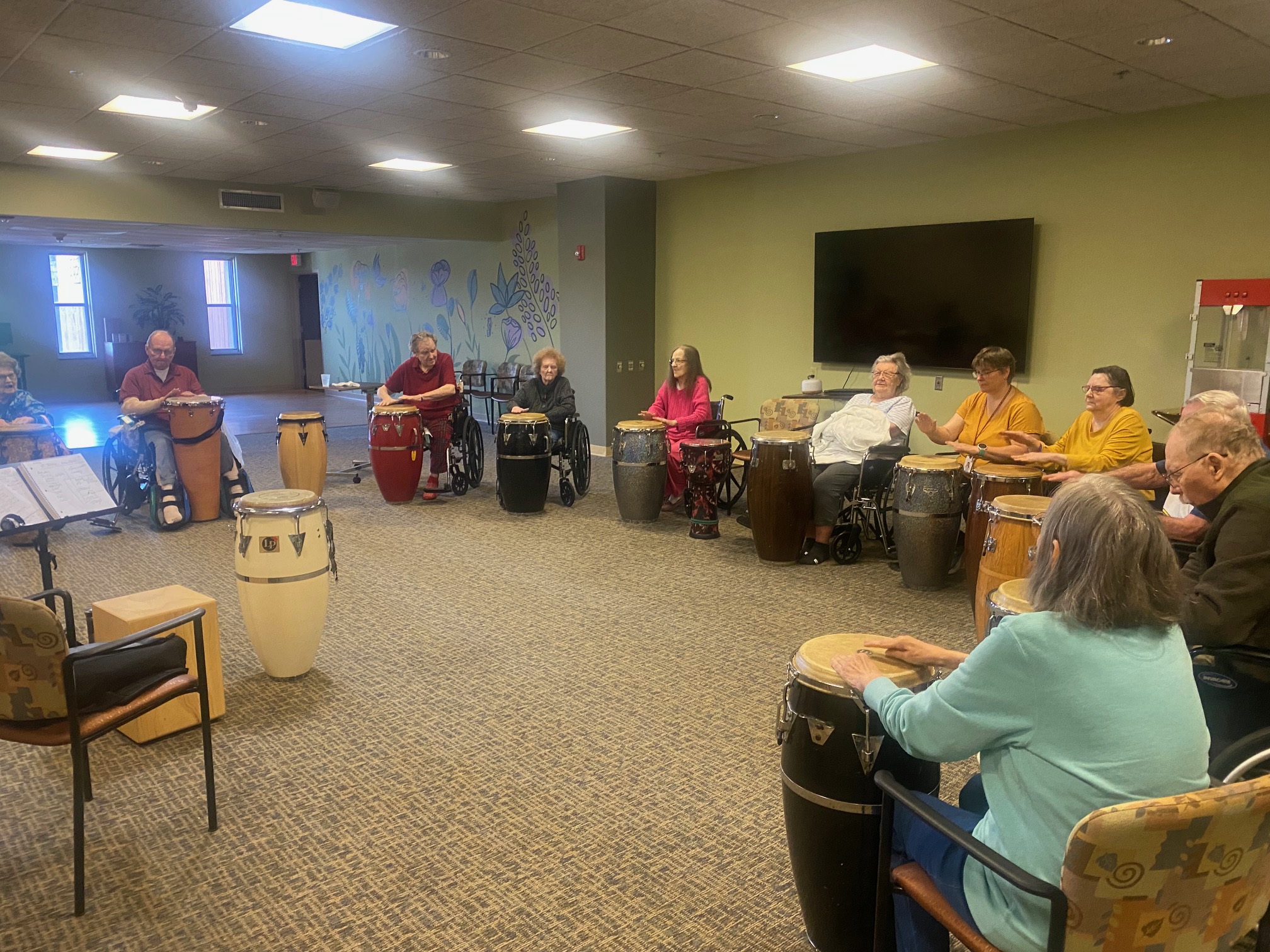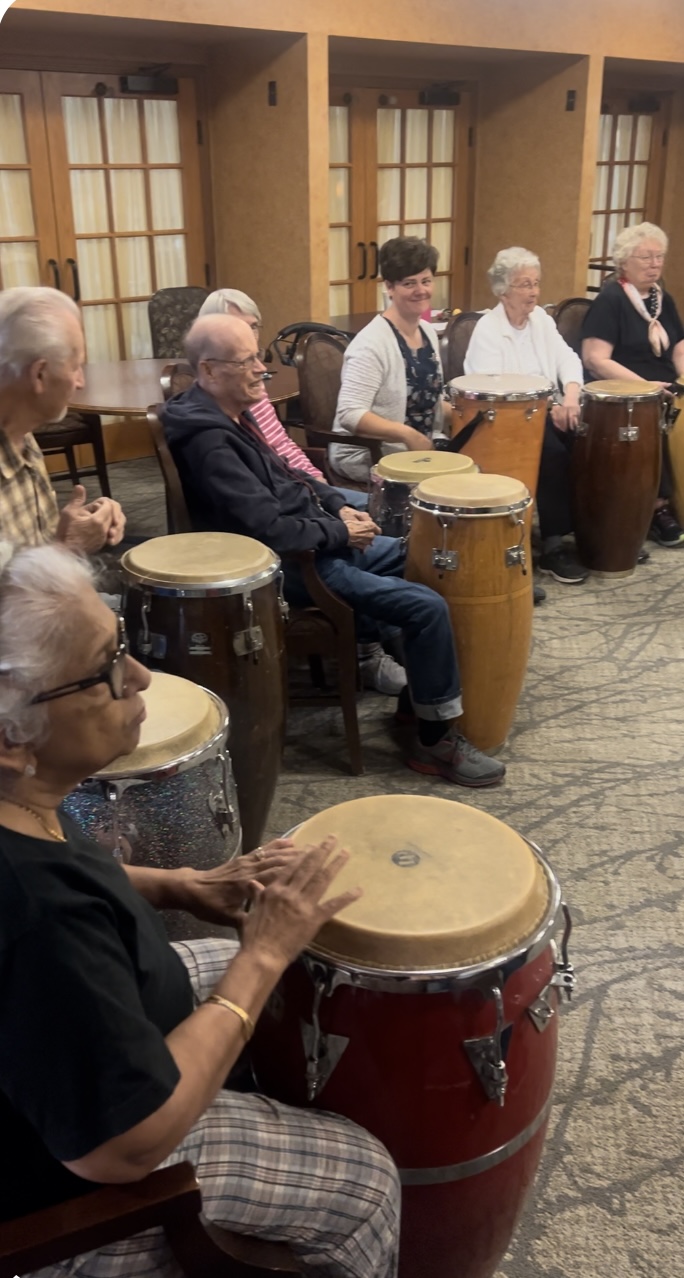Blog
John Gilmore (September 28, 1931 – August 20, 1995) was an American jazz saxophonist, clarinetist, and percussionist. He was known for his tenure with the avant-garde keyboardist/bandleader Sun Ra from the 1950s to the 1990s, and led The Sun Ra Arkestra from Sun Ra’s death in 1993 until his own death in 1995.
Gilmore was raised in Chicago and played clarinet from the age of 14. He took up the tenor saxophone while serving in the United States Air Force from 1948 through 1951. He then pursued a musical career, beginning as a tenor saxophonist on a national tour with the Harlem Globetrotters in an ensemble that included pianist Earl Hines in 1952.
more...Koko Taylor (born Cora Ann Walton, September 28, 1928 – June 3, 2009) was an American singer whose style encompassed Chicago blues, electric blues, rhythm and blues and soul blues. Sometimes called “The Queen of the Blues”, she was known for her rough, powerful vocals. Over the course of her career, she was nominated for 11 Grammy Awards, winning 1985’s Best Traditional Blues Album for her appearance on Blues Explosion.
Born on a farm near Memphis, Tennessee, Taylor was the daughter of a sharecropper. She left Tennessee for Chicago in 1952 with her husband, Robert “Pops” Taylor, a truck driver. In the late 1950s, she began singing in blues clubs in Chicago. She was spotted by Willie Dixon in 1962, and this led to more opportunities for performing and her first recordings. In 1963 she had a single on USA Records, and in 1964 a cut on a Chicago blues collection on Spivey Records, called Chicago Blues.
more...National Daughters Day 9-25-23 This is my beautiful daughter! I love you Maya. And my granddaughter Sadie!


more...
The main part of the here-imagedmolecular cloud complex is reflection nebula IC 4592. Reflection nebulas are made up of very fine dust that normally appears dark but can look quite blue when reflecting the visible light of energetic nearby stars. In this case, the source of much of the reflected light is a star at the eye of the horse. That star is part of Nu Scorpii, one of the brighter star systems toward the constellation of the Scorpion (Scorpius). A second reflection nebula dubbed IC 4601 is visible surrounding two stars above and to the right of the image center.

Earring George Mayweather (September 27, 1927 – February 12, 1995) was an American electric bluesand Chicago blues harmonica player, songwriter and singer. He recorded only one solo album, but he played the harmonica on recordings by J. B. Hutto and Eddie Taylor.
AllMusic commented that his album Whup It! Whup It! was “an admirable shot at recreating the ’50s Chicago harp sound”.
George Mayweather Jr. was born in Montgomery County, Alabama. He learned to play the harmonica after receiving the instrument as a Christmas present at the age of six. Inspired by the playing of Sonny Boy Williamson I, Mayweather mainly taught himself the rudiments of the instrument. Upon his relocation to Chicago, Illinois, in September 1949, he befriended Little Walter, who taught him techniques of harmonica playing.
more...Robert Roland Chudnick (September 27, 1927 – May 27, 1994), known professionally as Red Rodney, was an American jazz trumpeter.
Born in Philadelphia, Pennsylvania, he became a professional musician at 15, working in the mid-1940s for the big bands of Jerry Wald, Jimmy Dorsey, Georgie Auld, Elliot Lawrence, Benny Goodman, and Les Brown. He was inspired by hearing Dizzy Gillespie and Charlie Parker to change his style to bebop, moving on to play with Claude Thornhill, Gene Krupa, and Woody Herman. He was Jewish.
He accepted an invitation from Charlie Parker to join his quintet. and was a member of the band from 1949 to 1951. Being the only white member of the group, when playing in the southern United States he was billed as “Albino Red” as a ruse to avoid prejudice against mixed race musical combos. During this time he recorded extensively.
https://www.youtube.com/watch?v=Kvn1qOwF2_k
more...Earl Rudolph “Bud” Powell (September 27, 1924 – July 31, 1966 Harlem, NY) was an American jazz pianist and composer. Along with Charlie Parker, Thelonious Monk, Kenny Clarke and Dizzy Gillespie, Powell was a leading figure in the development of modern jazz. His virtuosity led many to call him the Charlie Parker of the piano. Powell was also a composer, and many jazz critics credit his works and his playing as having “greatly extended the range of jazz harmony”. In 1963, Powell contracted tuberculosis. During the next year, he returned to New York to perform at Birdland with drummer Horace Arnold and bassist John Ore. His performances during these years were adversely affected by his alcoholism. His emotions became unbalanced, and he was hospitalized in New York after months of erratic behavior and self-neglect. On July 31, 1966, he died of tuberculosis, malnutrition, and alcoholism. He was given the last rites of the Catholic Church.
more...
Just a few hundred million years ago, NGC 2936, the upper of the two large galaxies shown at the bottom, was likely a normal spiral galaxy — spinning, creating stars — and minding its own business. But then it got too close to the massive elliptical galaxy NGC 2937, just below, and took a turn. Sometimes dubbed the Hummingbird Galaxy for its iconic shape, NGC 2936 is not only being deflected but also being distorted by the close gravitational interaction. Behind filaments of dark interstellar dust, bright blue stars form the nose of the hummingbird, while the center of the spiral appears as an eye. Alternatively, the galaxy pair, together known as Arp 142, look to some like Porpoise or a penguin protecting an egg. The featured re-processed image showing Arp 142 in great detail was taken recently by the Hubble Space Telescope. Arp 142 lies about 300 million light years away toward the constellation of the Water Snake (Hydra). In a billion years or so the two galaxies will likely merge into one larger galaxy.

Gary Bartz (born Baltimore, September 26, 1940) is an American jazz saxophonist. He has won two Grammy Awards.
Bartz was first exposed to jazz as the son of the owners of a jazz nightclub in Baltimore. In 1958 he left Baltimore to study at the Juilliard School. In the early 1960s, he performed with Eric Dolphyand McCoy Tyner in Charles Mingus‘ Jazz Workshop. He worked as a sideman with Max Roach and Abbey Lincoln before joining Art Blakey and the Jazz Messengers. In 1968, he was a member of McCoy Tyner‘s band, Expansions.
more...Victor Edward Jurusz Jr. (September 26, 1953 – December 31, 2019), known professionally as Vic Juris, was an American jazz guitarist.
Juris was born in Jersey City, New Jersey, but he moved with his family to Parsippany early in his life. In 1963, at the age of 10, he began learning guitar. At 11, he studied guitar at the home of his teacher, Ed Berg, and got interested in jazz listening to Berg’s records of guitarists Django Reinhardt, Jim Hall, Barney Kessel, Jimmy Raney, and Johnny Smith. In his teens he played the rock music of the 1960s. When he was 19, he met blind saxophonist Eric Kloss and they became friends. He made his first recording on Kloss’s album Bodies’ Warmth (Muse, 1975). Around the same time, he met guitarist Pat Martino, who became a friend and mentor.
more...George Gershwin (/ˈɡɜːrʃ.wɪn/; born Jacob Gershwine; September 26, 1898 – July 11, 1937) was an American composer and pianist whose compositions spanned popular, jazz and classical genres. Among his best-known works are the orchestral compositions Rhapsody in Blue (1924) and An American in Paris(1928), the songs “Swanee” (1919) and “Fascinating Rhythm” (1924), the jazz standards “Embraceable You” (1928) and “I Got Rhythm” (1930), and the opera Porgy and Bess (1935), which included the hit “Summertime“.
Gershwin studied piano under Charles Hambitzer and composition with Rubin Goldmark, Henry Cowell, and Joseph Brody. He began his career as a song plugger but soon started composing Broadway theater works with his brother Ira Gershwin and with Buddy DeSylva. He moved to Paris, intending to study with Nadia Boulanger, but she refused him, afraid that rigorous classical study would ruin his jazz-influenced style; Maurice Ravel voiced similar objections when Gershwin inquired about studying with him. He subsequently composed An American in Paris, returned to New York City and wrote Porgy and Bess with Ira and DuBose Heyward. Initially a commercial failure, it came to be considered one of the most important American operas of the twentieth century and an American cultural classic.
Gershwin moved to Hollywood and composed numerous film scores. He died in 1937, only 38 years old, of a brain tumor.
His compositions have been adapted for use in film and television, with many becoming jazz standards.
more...4pm Yom Kippur service at Mt Zion with cantor Jennifer Strauss-Klein, Andrea Stern, Tami Morse, Pat Okeefe, Dave Burk and boom boom shaka
more...

This Hubble Picture of the Week includes the pithily-named galaxy SDSS J103512.07+461412.2, visible in the centre of this image as a dispersed sweep of dust and stars with a denser, brighter core. SDSS J103512.07+461412.2 is located 23 million light-years from Earth in the constellation Ursa Major. The seemingly rambling name is because this galaxy was observed as part of the Sloan Digital Sky Survey (SDSS), a massive survey that began in 2000 with the aim of observing and cataloguing vast numbers of astronomical objects. So far, it has recorded several hundred million astronomical objects.
In the early days of astronomy catalogues, astronomers painstakingly recorded individual objects one by one. As an example, the Messier catalogue includes only 110 objects, identified by the astronomer Charles Messier because they were all getting in the way of his comet-hunting efforts. As the Messier catalogue is so limited, it is sufficient to simply refer to those objects as M1 to M110. In contrast, when a survey as massive in scope as the SDSS is involved, and when huge volumes of data need to be processed in an automated manner, the names assigned to objects need to be both longer, and more informative.
To that end, every SDSS object has a designation that follows the format of: ‘SDSS J’, followed by the right ascension (RA), and then the declination (Dec). RA and Dec define the position of an astronomical object in the night sky. RA is analogous to longitude here on Earth, whilst the Dec corresponds to latitude. To be more exact, RA measures the longitudinal distance of an astronomical object from the point where the celestial equator (the mid-point between the north and south celestial poles) intersects with the ecliptic (the plane in which Earth orbits around the Sun). The entire night sky is then carved into 24 slices, known as ‘hours’, measured eastwards from that starting point (which is designated as zero hour). This means that the RA can be expressed in ‘hours’, ‘minutes’ and ‘seconds’. Dec is the angle north or south of the celestial equator, and is expressed in degrees. The RA and Dec of the objects featured in each Hubble Picture of the Week can be found on the lower right side of the webpage!
Thus, the SDSS J103512.07+461412.2 name simply tells us that the galaxy can be found 10 hours, 35 minutes and 12 seconds east of the zero-hour point on the celestial equator, and just over 46 degrees to the north of the celestial equator. So that lengthy name is really an identifier and a detailed location in one!
[Image Description: A galaxy in the centre of a wide view of space. It is surrounded by a variety of differently-shaped small galaxies. A wide and very flat spiral galaxy, and one star with four prominent diffraction spikes, are noticeable. The galaxy itself is a broad horizontal streak of tiny stars, extending left and right from a dense and bright core of stars in the centre.]

More Posts
- Musicians & Artists Cancellations
- Coronavirus: Deserted Italian street rings out with song as people lean out of windows to sing together during lockdown
- Wisdom in the time of Crisis
- The Cosmos with NGC 3226/7
- Shirley Scott Day
- Quincy Jones Day
- Robert Pete Williams Day
- Les Baxter Day
- World Music with Frigg
- Daily Roots with Gato Negro
- Urinetown Cancelled
- The Cosmos with Gum 15
- Blue Mitchell Day
- Roy Haynes Day
- Lightnin’ Slim Day
- Flamenco Fridays with Paco Cepero y Rancapino Chico
- Daily Roots with Bunny Wailer
- The Cosmos with M31
- James Taylor Day
- Al Jarreau Day